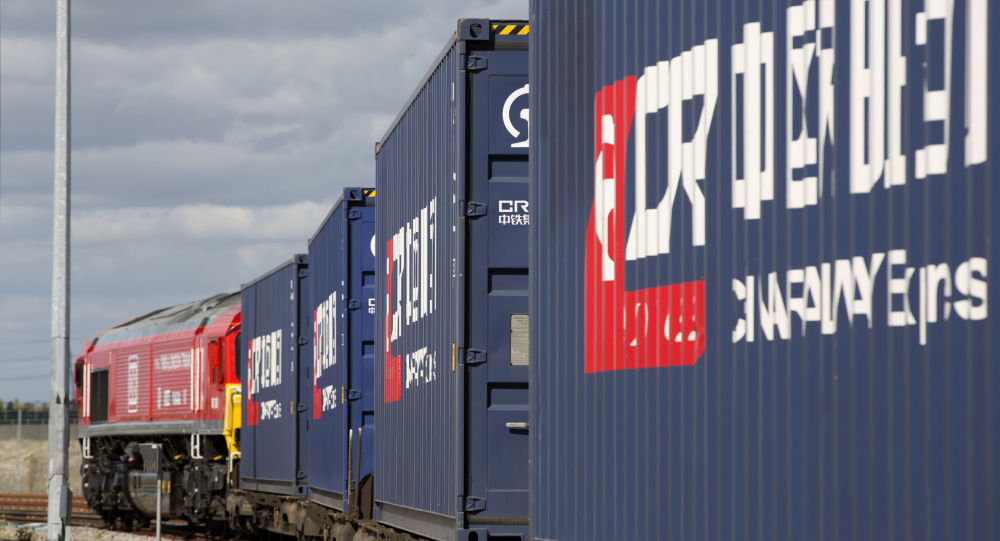
Transit transportation of containers through the Russian Railways network will grow to 4 million TEU in 2027. That’s nearly four times what it was in 2021, and some experts say the plan is “virtually unrealistic.”
Russian Railways expects to increase transit traffic to 4 million 20-foot equivalent units (TEU) containers by 2027 at the latest. This was stated by the Deputy General Director of the company Alexei Shilo at a briefing, RBC correspondent reports.
“This is an ambitious task, we want to compete for this figure [4 million TEU]. We would like to achieve it in 2025,” Shilo said. Now Russian Railways is preparing a program of measures to achieve this goal.
In 2021, the transit of containers through Russia increased by 43%, to 1.1 million TEU. At the same time, a total of 6.5 million TEUs were transported (most of them were domestic transportation). Over the past five years, container traffic has doubled, the press service of the monopoly reported.
More than 62% of transit containers were transported by UTLC ERA, owned on parity terms by Russian Railways, Belarusian and Kazakhstan Railways. In total, 692.5 thousand TEU were transported on the company’s services.
439.5 thousand TEU (63%) were transported to Europe. 253.0 thousand TEU (37%) proceeded in the direction of China. The transit of containers has reached an absolute record in the history of Russian and Soviet railways, which is due in no small measure to high rates on alternative routes between Asia and Europe and anti-coronavirus restrictions in the ports of Europe and China, RBC was told through the press service by the director for strategy and development of transport FESCO group Maxim Shishkov. Shippers are gradually reorienting to land routes, as they are cheaper, faster and safer, agrees Dmitry Murev, CEO of RZD Logistics. “Both Japan and South Korea are interested in land transit. All this creates a huge potential for further growth in transit,” he said.
According to Shishkov, transit traffic will continue to grow at a double-digit pace in the coming years. The market is waiting for the emergence of new players, adds Alexei Bezborodov, managing partner of Infra Projects.
Why RZD has become more serious about the transit of containers
The company does not have a “super task” to increase the share of container transit in total revenue, Shilo notes. But a significant increase in traffic made Russian Railways take a “slightly more serious” approach to the formation of further actions. In 2022, the transit of cargo in containers will bring the company about 2% of freight revenue, a Russian Railways spokesman said, but did not disclose specific amounts.
“There is a need to hedge our risks on credit funds that we attract in foreign currency. Payment for transit is in Swiss francs. An increase in the transit of containers will allow us to feel better from a financial point of view,” Shilo said.
The transit of one container through the territory of Russia on average gives about $10,000 effect for the Russian economy and budget, Sergey Shishkarev, the main co-owner of the Delo group (which controls the largest container operator TransContainer), said in an interview with RBC. But, he said, Russia accounts for only about 6% of container traffic between Europe and Southeast Asia and vice versa. “Imagine how much additional tax revenue could be received if the infrastructure was ready,” he added. According to the director of the logistics operator “RTSB-Rus” Alexander Baskakov, the transit of one TEU gives about $100-150 in taxes.
What can get in the way of reaching your goal?
Market participants cite several barriers to quadrupling container transit:
- The growth of container transit up to 4 million TEU may be hindered by the low throughput of border crossings, the slow work of customs services and excessive loading of port infrastructure, Murev notes.
- A serious shortage of carrying capacity of Russian Railways and transshipment capacity has already become a deterrent to the growth of container transit volumes in Russia and neighboring countries, emphasizes Nikita Pushkarev, director of sales and customer service at TransContainer.
- The problem of shortage of platforms for containers remains quite acute, there is a need for qualified workers, says Murev.
- Market development is also hindered by epidemiological restrictions, notes Vyacheslav Saraev, head of the container operator Russian Railways Business Active.
- 4 million TEU of transit containers is a “practically unrealizable plan,” concludes Mikhail Burmistrov, general director of INFOLine-Analytics. Its implementation will require, among other things, the partial release of the Trans-Siberian Railway for container traffic. “Given the ongoing backlog in the reconstruction of the Eastern landfill, this may call into question plans to increase coal exports and create risks for exporters,” the expert warns.
Operating under a record load of more than 1 million transit containers in 2021 “revealed a lot of bottlenecks,” Shilo admits. For their “sewing” will require a lot of additional investment, primarily in the creation of terminals in Kazakhstan and China. We will also have to develop checkpoints in Russia, Kazakhstan and China, as well as look for new exit points for routes to Europe, he said.
Source: TKS




